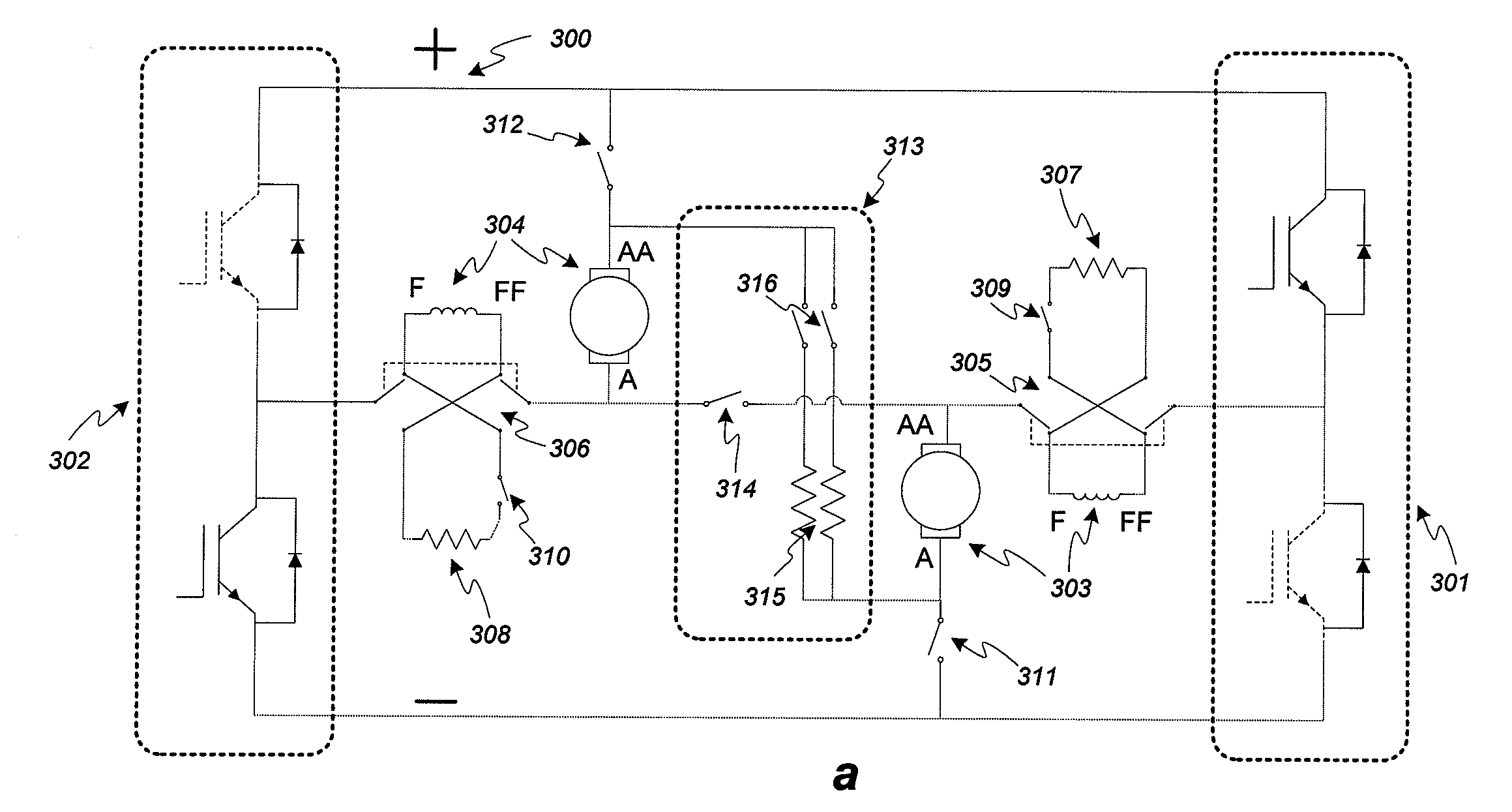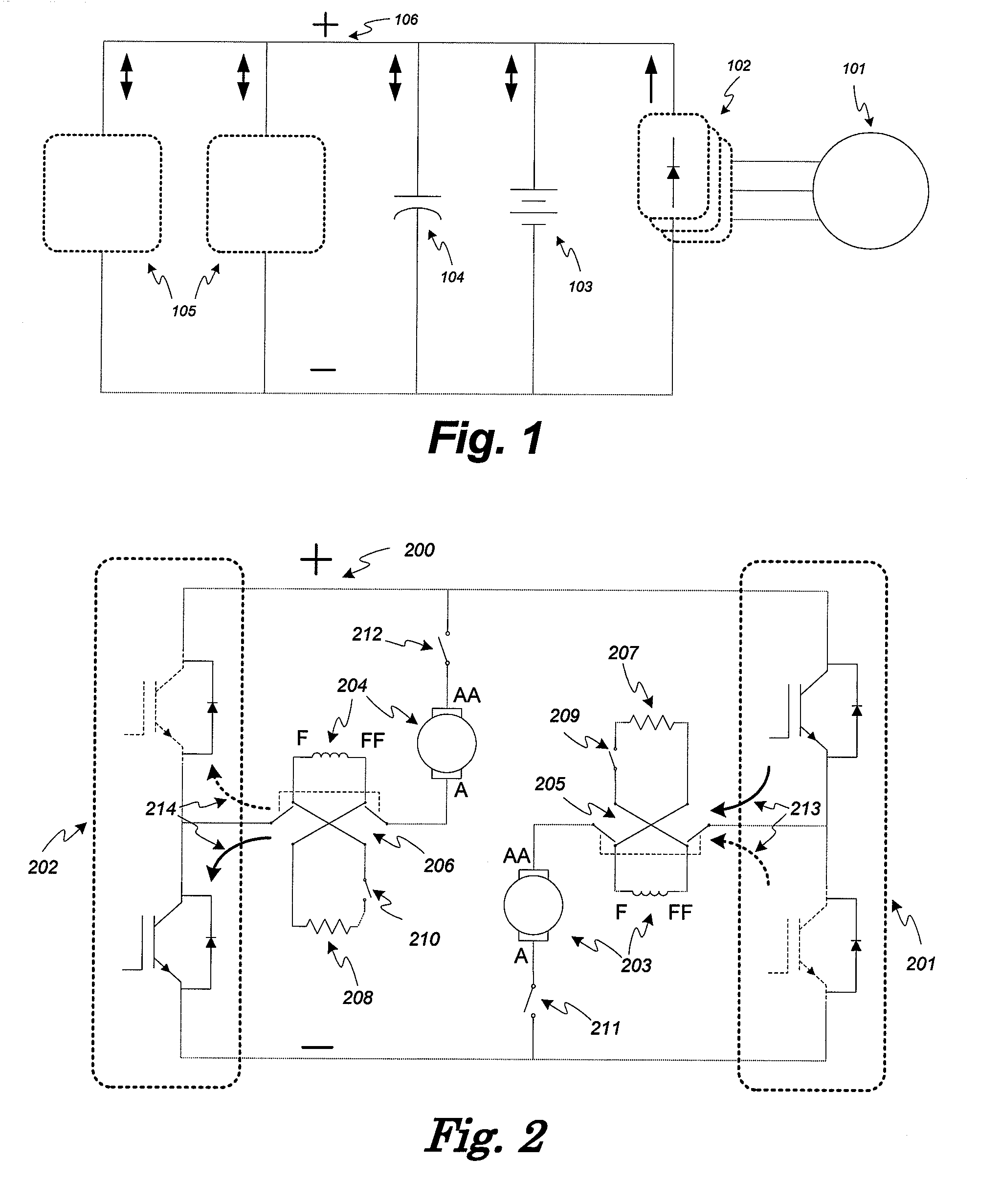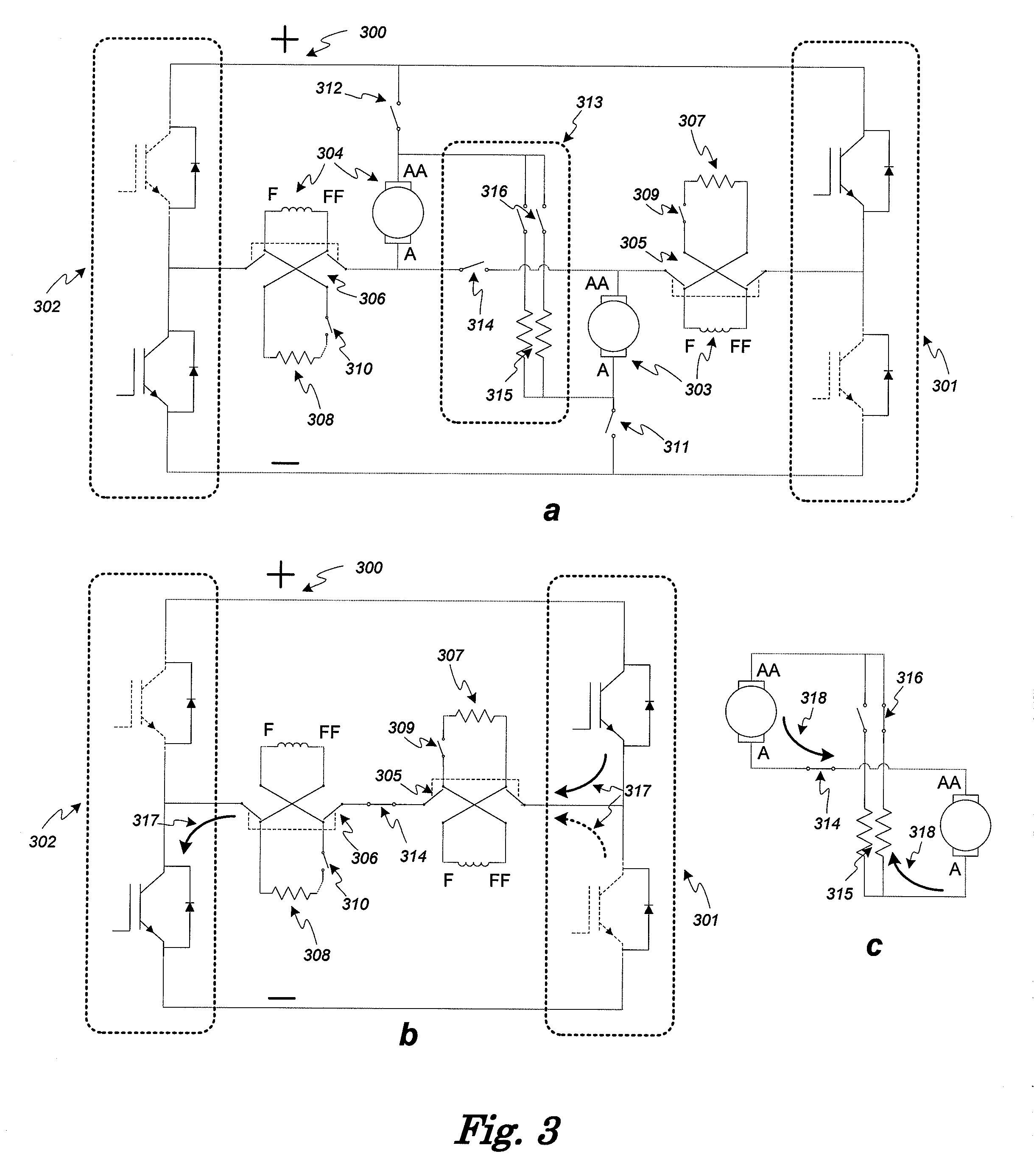Power architecture and braking circuits for DC motor-propelled vehicle
a technology of braking circuit and braking circuit, which is applied in the direction of motor/generator/converter stopper, electric device, dynamo-electric converter control, etc., can solve the problems of difficult control of flat spots are a further costly high maintenance operation, and it is difficult to control the power drawn from the traction motor in braking mode, so as to prevent the development of flat spots on the locomotive wheels, reduce the downtime and maintenan
- Summary
- Abstract
- Description
- Claims
- Application Information
AI Technical Summary
Benefits of technology
Problems solved by technology
Method used
Image
Examples
second embodiment
Improved “Soft” Extended Braking Circuit
[0082]The circuit of FIG. 5 is a preferred embodiment configuration for a regenerative and / or dynamic braking circuit. As shown in the figure, only the required components of the circuit are illustrated which consist mainly in 2 choppers (501, 502), a braking resistor grid 515, braking resistor selectors 516 and three reversers (505, 506&508) per pair of motors. However, it is possible to add any number of extra contactors or switches for isolation, protection and security without affecting the basic operation of the invention. As presented in FIG. 5, the circuit is in normal motoring mode.
[0083]FIG. 6 illustrates specifically the circuit in motoring mode where the current 611 in motor 603 series connected field and armature windings is controlled, as in previous circuits of FIGS. 1 and 2, by the chopper 601. Similarly, current 612 in motor 604 is controlled by chopper 602. Reverser switch 608 is configured so as to isolate the two motor circu...
PUM
 Login to View More
Login to View More Abstract
Description
Claims
Application Information
 Login to View More
Login to View More - R&D
- Intellectual Property
- Life Sciences
- Materials
- Tech Scout
- Unparalleled Data Quality
- Higher Quality Content
- 60% Fewer Hallucinations
Browse by: Latest US Patents, China's latest patents, Technical Efficacy Thesaurus, Application Domain, Technology Topic, Popular Technical Reports.
© 2025 PatSnap. All rights reserved.Legal|Privacy policy|Modern Slavery Act Transparency Statement|Sitemap|About US| Contact US: help@patsnap.com



